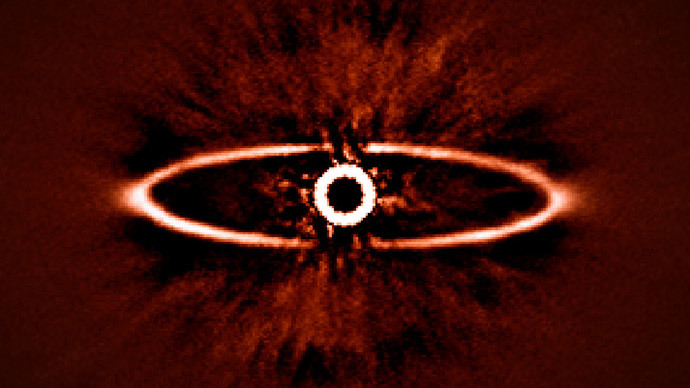SPHERE camera will identify new planets by looking through light pollution

Astronomers encouraged by a string of exciting discoveries now have reason to hope more luck will come their way with the debut of a new technology that promises to help them identify faraway planets located within a cluster of celestial bodies.
The European Southern Observatory (ESO) in Germany debuted its Spectro-Polarimetric High-contrast Exoplanet Research (SPHERE) instrument that has already taken photos of the universe in search of still-undiscovered planets. SPHERE's primary goal will be to locate and capture those planets by increasing the contrast of the images, thereby reducing the distorting glare from the star a planet sits near.
Exoplanets, defined as a planet that orbits a star other than our own sun, have traditionally been discovered by indirect means, with scientists often measuring the radial velocity of a host star, identifying the speed of a gravitational pull, or other factors. Both the Kepler-10c and the Kapteyn multiplanet system, made up of two planets orbiting a star located a mere 13 lightyears from earth, were discovered in this manner.
"The first of three novel techniques exploited by SPHERE is extreme adaptive optics to correct for the effects of the Earth's atmosphere so that images are sharper and the contrast of the exoplanet increased,” ESO said in a statement Wednesday.
“Secondly, a coronagraph is used to block out the light from the star and increase the contrast still further. Finally, a technique called differential imaging is applied that exploits differences between planetary and stellar light in terms of its color or polarization – and these subtle differences can also be exploited to reveal a currently invisible exoplanet.”
The camera was placed on the Very Large Telescope in Chile, promising to improve on the already incredible observations seen through the VLT's four 8.2 meter telescopes.
“SPHERE is a very complex instrument,” Jean-Luc Beuzit of the Institut de Planetologie et d' Astrophysique de Grenoble, France and the principal investigator of SPHERE told Phys.org. “Thanks to the hard work of the many people who were involved in its design, construction and installation it has already exceeded our expectations. SPHERE is a uniquely powerful tool and will doubtless reveal many exciting surprises in the years to come.”














